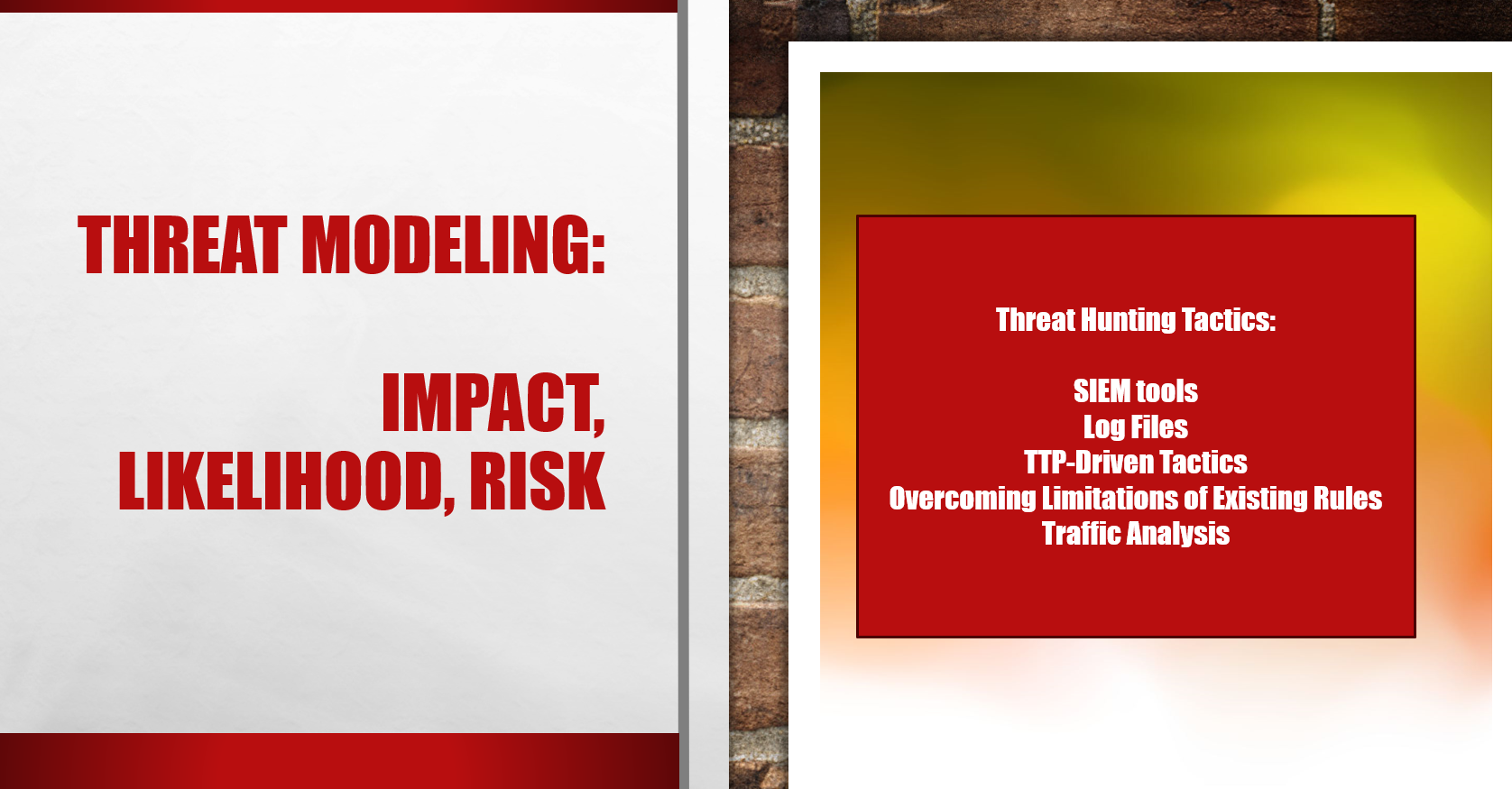
Threat Modeling: Assessing Impact and Likelihood
Understanding Risk:
-
Risk Assessment: Risk is evaluated by considering both the likelihood of an event occurring and its potential impact.
-
Likelihood: Measured as a probability or percentage.
-
Impact: Expressed as a dollar value representing the cost of the event.
-
Prioritization: Risk assessment helps prioritize threat models based on their criticality.
Tailoring Risk Assessment:
-
Enterprise Size: Larger enterprises may have different priorities and resources compared to smaller organizations.
-
Focus Areas: Consider factors like the likelihood of successful attacks, data compromise, availability, cost-effectiveness of controls, and potential damage.
Determining Likelihood:
-
Motivation: Understand the attacker’s motives and goals.
-
Trend Analysis: Identify emerging threats and their effectiveness.
-
Annual Rate of Occurrence (ARO): Assess how frequently similar attacks affect other organizations.
Determining Impact:
-
Cost Calculation: Estimate the financial cost of a threat, including business disruption, data breaches, fines, and reputational damage.
Example:
-
Cloud Provider: Focus on preventing successful attacks, protecting customer data, and maintaining high availability.
-
Small Organization: Prioritize cost-effective controls and may be more concerned with protecting internal systems.
By carefully considering both likelihood and impact, organizations can effectively prioritize their security efforts and allocate resources to address the most critical threats.
Understanding Proactive Threat Hunting
Threat Hunting Defined:
-
Proactive Approach: Threat hunting uses insights from threat research and modeling to proactively search for evidence of malicious activities within a network or system.
-
Contrast with Reactive Processes: Unlike incident management, which is triggered by alerts, threat hunting is proactive and seeks out threats before they are detected.
-
Comparison to Penetration Testing: While pen testing focuses on demonstrating weaknesses and achieving system intrusion, threat hunting is purely analytical and less disruptive.
Establishing a Hypothesis:
-
Threat Modeling Guidance: Hypotheses for threat hunting are derived from threat modeling, focusing on high-likelihood, high-impact threats.
-
Intelligence-Driven: Threat intelligence, such as new campaign types or data breaches in similar markets, can trigger threat hunting investigations.
Profiling Threat Actors and Activities:
-
Threat Actor Categorization: Threat intelligence helps categorize threat actors (insider, hacktivist, nation-state, APT).
-
TTP Association: Threat actors can be linked to specific tactics, techniques, and procedures (TTPs).
-
Scenario Creation: Threat modeling helps create scenarios that simulate potential attacks and attacker objectives.
Key Takeaways:
-
Threat hunting is a proactive approach to cybersecurity that complements reactive measures.
-
Hypothesis-driven and intelligence-led, threat hunting focuses on identifying and addressing potential threats before they become incidents.
-
Understanding threat actors and their TTPs is crucial for effective threat hunting.
Threat Hunting Tactics: Leveraging Tools and Data
Utilizing Existing Tools:
-
SIEM: Security information and event management (SIEM) databases are often a valuable source of data for threat hunting.
-
Log Analysis: In the absence of a SIEM, analyzing log files, process information, and network captures can provide valuable insights.
Overcoming Limitations of Existing Rules:
-
Rule Failure: Assume that existing security monitoring rules may not be effective in detecting certain threats.
-
Query Refinement: Adjust queries to capture relevant data and prioritize matches.
TTP-Driven Tactics:
-
Adversary Understanding: Develop tactics based on an understanding of threat actors and their TTPs.
-
Predicting Actions: Anticipate the tactics and tools attackers might use to compromise a network.
Example: Malware Detection:
-
Network Traffic Analysis: Identify suspicious outgoing traffic to known malicious domains.
-
Process Analysis: Analyze the executable processes on infected hosts to find the malicious program.
-
Pattern Identification: Look for similarities among infected hosts to automate detection and prevention.
-
Attack Vector Blocking: Identify the initial infection method and block future attacks by blacklisting vulnerable applications.
Key Takeaways:
-
Threat hunting tactics often involve leveraging existing security tools and data.
-
Understanding adversary TTPs is crucial for developing effective threat hunting strategies.
-
By analyzing network traffic, processes, and other relevant data, organizations can proactively detect and respond to threats.
Leave a Reply